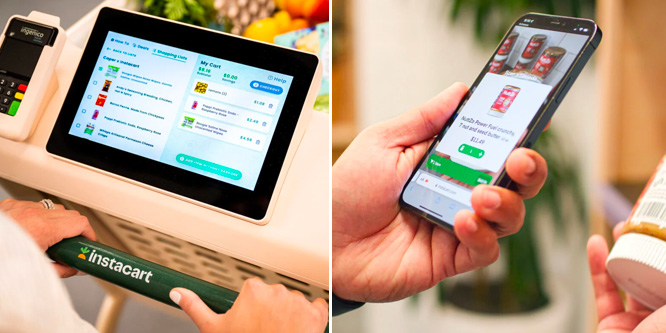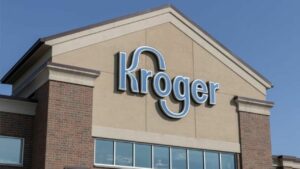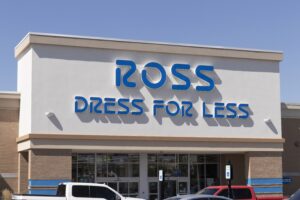
Photos: Instacart
September 26, 2022
Can Instacart marry in-store and online grocery shopping experiences?
Instacart last week unveiled Connected Stores, a bundle of six Instagram-linked technologies aiming to combine the convenience, speed and personalization of online grocery shopping with the inspiration and discovery that happens in physical stores.
The technologies, some of which support Instacart shoppers and retail associates, include:
- Upgraded Caper Cart: Acquired by Instacart last October, the AI-powered smart “Caper Cart” uses scales, sensors, touchscreens and computer vision to enable customers to place items in the cart and checkout without manually scanning items. The updated model is slimmer and lighter with 65 percent more capacity.
- Scan & Pay: For grocers not wanting smart carts, the feature enables customers to use their mobile phones to scan items as they shop and pay for them. Items bought can be linked to customers’ online shopping accounts to make them easy to buy again.
- Lists: Customers can sync their shopping lists directly to a Caper Cart by scanning a QR code. The Caper Cart helps customers locate the items they are shopping for and automatically checks them off their list as they are added to the cart.
- Carrot Tags: Retailers can connect electronic shelf labels to the Instacart Platform to add pick-to-light capabilities. Shoppers select an item on their phone and the corresponding shelf label will flash when found. The tags also display whether products are gluten-free, organic, kosher, SNAP EBT-eligible and other information to support discovery.
- FoodStorm Department Orders: Building on last October’s acquisition of online catering order platform FoodStorm, the feature lets shoppers order from multiple departments, such as deli and bakery, and have them ready at the same time.
- Out of Stock Insights: An application programming interface (API), Out of Stock Insights, gives store associates automatic, real-time alerts when items are running low or out of stock.
Piloted at select retailers, the technology will debut at Bristol Farms supermarket in Irvine, CA.
The launch comes as Instacart has started offering software services to retailers backed by several acquisitions — also including the Rosie e-commerce platform supporting local and independent grocers and Eversight AI-powered pricing suite — ahead of an expected initial public offering.
- Instacart Announces ‘Connected Stores’ Technology to Help Grocers Seamlessly Unify the Online and In-Store Shopping Experience for Consumers – Instacart
- Instacart launches Connected Stores, a suite of in-store tech for retailers – TechCrunch
- Instacart launches suite of new features to make grocery stores smarter – Fast Company
- Instacart Revenue Growth Accelerates Ahead of Planned IPO – The Wall Street Journal
Discussion Questions
DISCUSSION QUESTIONS: Execution issues aside, does Instacart’s Connected Stores suite appear to go a long way in bridging the online and offline grocery shopping experience? Should grocers have concerns over Instacart as a technology partner?
Poll
BrainTrust
Peter Charness
Retail Strategy - UST Global
Katie Thomas
Lead, Kearney Consumer Institute
Recent Discussions







From Instacart’s perspective this is all about creating a technology stack so that it can be seen as more of a service provider for retailers which, in turn, will help its eventual IPO valuation. For many retailers – especially smaller and medium ones which will not want to build out technology themselves – the functions it offers will be useful, some more so than others. I think smart carts are an over-engineered, costly solution that don’t add enough value for many retailers to implement. Scan and shop is interesting, so long as it has built-in protections against shrink which has become a real issue. Overall, however, it won’t do any harm for Instacart to branch out in this way.
Shoppers have shown that they can change the way they shop. They are willing to learn new technologies, new interfaces, and new shopping paradigms. After the pandemic, the main takeaway is that “things won’t go back to the old way” as shoppers have different expectations for ease, convenience, and remote. As always, the main concern preventing adoption will be the cost to the store, and the retailers’ inertial resistance to change.
I guess this technology helps to reduce friction in certain areas for the consumer, such as waiting in line and stock issues. But the real breakdown in online vs. offline is a pleasurable shopping experience where people can explore the aisles. This doesn’t address any of the treasure hunting or “oops I forgot I needed this” that comes from wandering the store.
Instacart under Fidji Simo has taken a smart approach to become a technology partner to grocery stores. She was vocal about positioning Instacart this way since joining as CEO, and it’s cool to see this bundle launch even after her transition to chair and more than one valuation cut. The consistent narrative and followed-through action should convey trust to grocers that, at least for now, Instacart is an ally, not a competitor.
This is a glimpse of what the future of grocery shopping will entail, and a smart investment for Instacart. Combining these technologies across online and offline channels gives shoppers more ways to control the type of shopping experience they prefer, and acknowledges the growing comfort level that consumers have using technology.
Maybe there is something I am missing but how does this bridge online and offline? This uses technology to make the in-store (offline) experience more convenient.
I don’t think grocers should have concerns over Instacart as a technology partner for now. I think they can be a tool in the toolbox for continued test-and-learns, at least on the store technology products. I am less familiar with how effective their new acquisitions are re: e-commerce.
Instacart got its foot into stores to pick orders, but now it’s intent on becoming the essential piece in almost every grocery chain’s multichannel brand experience. They seem to have acquired a number of interesting applications, but many that will make the shopping experience sort of complicated. The KIS(S) method (Keep It Simple) should be the mantra for anyone developing or acquiring technology. I’m not sure many shoppers are ready for pick to light. Also, I didn’t see RFID mentioned, but I’d be amazed if they’re not using it already to make the stockout alerts possible.
Kudos to Instacart for growing the business and offering more ways for supermarkets to engage their services, especially now that the pandemic rush to home grocery delivery has faded.
That said, two things:
The standard online Instacart experience has improved, but has a way to go to be frictionless.
Scan and pay instead of Caper Cart is ripe for fraud. How does it detect what was put in the cart or in what quantity? What stops someone from faking that they have the app with make believe scans and walking out of the store with a cart full of unpaid items?
There are some conveniences here for consumers, but the out-of-stock indicator is the most important for retailers. If it’s effective, this technology will pay for itself.
While this is all quite cool and very relevant to shopping experience, the pivot of Instacart to a technology provider is going to be quite challenging. The biggest grocers will want these capabilities as in-house assets, which leaves Instacart the mid-market grocers as potential customers. That’s not an easy path forward. It’s a good pivot, but you have to wonder if it’s based on foreseeing a reduction of the core Instacart business – as the bigger grocers are taking that function in-house.
This almost sounds like technology for technology’s sake. However as DeAnn commented, “This is a glimpse of what the future of grocery shopping will entail.”
Technology will provide the impetus to change grocery shopping, whether it is Amazon, Instacart, or another.
I guess it has potential, but some of it looks like technology in search of a problem. Scanning a product for its nutrition information, seems like a step that is not needed in most cases. The information is right on the package.
With its Connected Stores announcement last week, and its commitment to develop a Retail Media Network, announced by Simo in March, Instacart is working to cement its positioning as a trusted solution provider, not a competing grocery retailer.
This is wise, I think. Mid-tier and strong regional supermarket chains are hard-pressed to match top-tier competitors when it comes to shopper experiences, media sales, and in-store technology. Crucial buy-versus-build decisions are being made now, as grocers seek to offset the costs of digital complexity by reducing store operating costs and adding alternative sources of revenue.
Instacart is throwing a number of ideas against the wall here:
The Carrot digital shelf tags are a neat take on a technology that has had slow adoption in the U.S. I like the addition of an app and blinker for way-finding, but envision aisles full of flashing lights….
The connected Caper Carts are the latest in a long series of “smart” cart concepts that date back to the 1990s. Maybe they will stick this time, but they use a lot of tech. Hope they are rain-proof.
Scan & Pay is problematic for me. A lot of effort at the shelf to save a little effort at the front end.
Out-of-stock/low stock detection is nothing particularly new. “Detect and remediate” solutions are insufficient — unless paired with a perpetual inventory and forecasting engine that automates ordering and prevents most OOS.
Mid-tier and regional supermarket operators will want to take a hard look at Instacart’s basket of solutions, as they will need some versions of them to compete.
Not sure about this. Is Stop & Shop’s SCAN IT! a success? Video Cart before that failed. This doesn’t seem all that different. When I think of Instacart, I think of getting an order delivered to you. Does this help that process? Seems like it could be engineered to do so, but isn’t there yet.
Instacart is in tight spot where must move forward while at the same time not burn bridges. Amazon is an impressive competitor, innovating the in-store and offline experience at rapid speed. Small to medium sized grocers are skeptical of their intent (separated from customer data). And they need to build an impressive growth path in order to proceed with an IPO.
CEO Fidji Simo is making the right moves, however, with acquisitions, and adding delivering new, valuable feature sets for grocers. They are making strides on the shopping experience. In time, these will earn the trust of grocery partners while also making Wall St happy going forward.
Grocers who will use this technology will give Instacart full access to their insights. There’s a possibility that Instacart may use the extracted data to examine regional trends and patterns and establish its own platform.
Although technological visions are fairly impressive, their execution cannot be held apart. It’s not easy to implement such a tech stack. The majority of US retailers, even now, do not know at SKU level how many units are present on which store’s shelf. With reference to Instacart’s initiatives, such developments will undoubtedly take place in the future but as of right now, I’m not sure how precisely they can be put into practice.